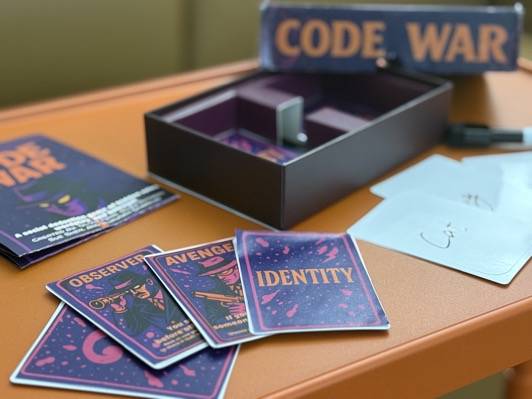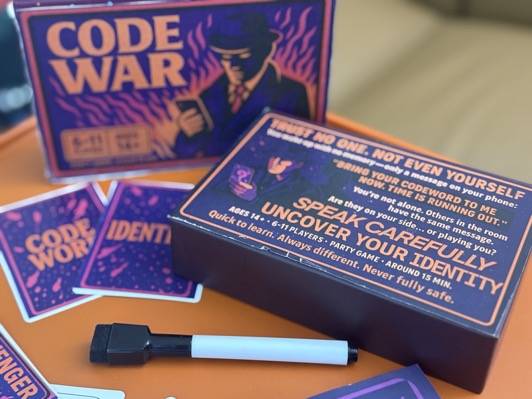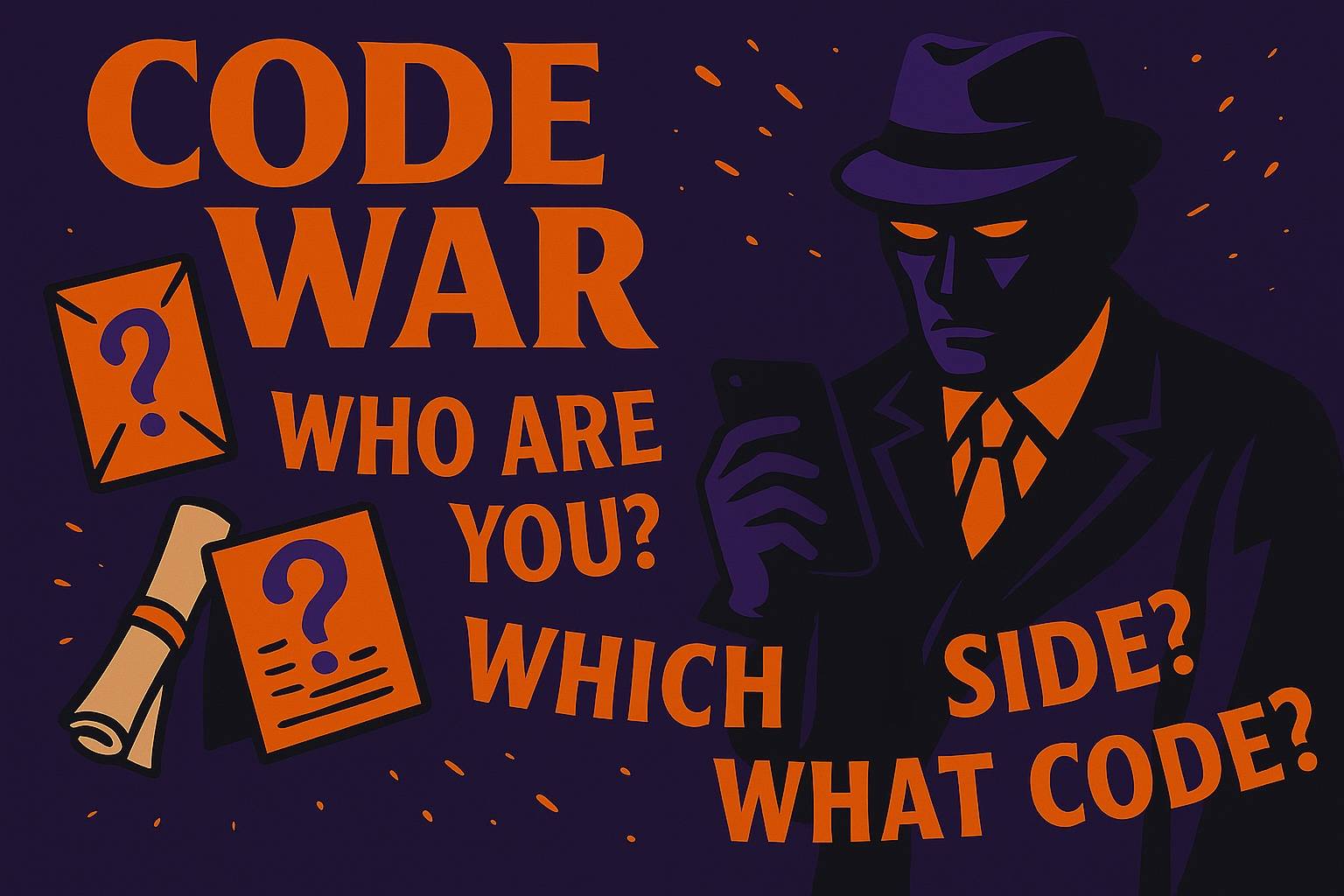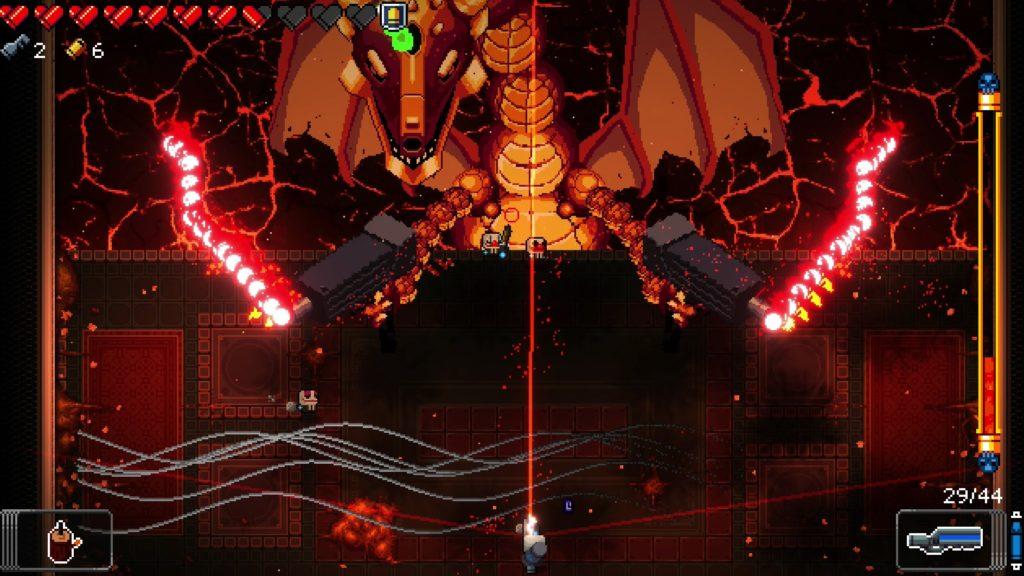By Team 6: Olivia Feng, Sue Shen, Riley Pittman, and Whayden Dhamcho
Artist’s Statement
Code War was born from a fascination with identity, uncertainty, and the tension between trust and deception. We wanted to design a social deduction game where players aren’t just guessing who others are – they’re also questioning who they are themselves. Inspired by games like Who’s the Undercover and Werewolf, we aimed to retain the simplicity of word-based clue-giving while pushing the psychological depth further with hidden roles and asymmetric player pressures.
At the start of each game, no one knows what side they’re on – not even themselves. We introduced this uncertainty to heighten emotional tension and disrupt the familiar rhythm of “good guys vs. bad guys.” As the game unfolds, roles like the Observer and Avenger create meaningful decision points, while the Politician role raises the stakes dramatically: if they’re voted out, the opposing team wins instantly.
To support this dynamic tension, we focused on mechanics like word assignment, hidden roles, and group voting that are simple in form but rich in implication. These elements interact in unexpected ways, creating space for player-driven moments of suspicion, surprise, and discovery. This approach follows the MDA framework that clear mechanics leads to emergent gameplay and compelling aesthetic experiences.
Drawing from A Theory of Fun, we also structured the deduction loop to prevent it from becoming static. Players are challenged to engage in adaptive pattern recognition without falling into repetitive, solvable patterns. By varying hidden information and formal player interaction structures, Code War keeps each round unpredictable.
Concept Map
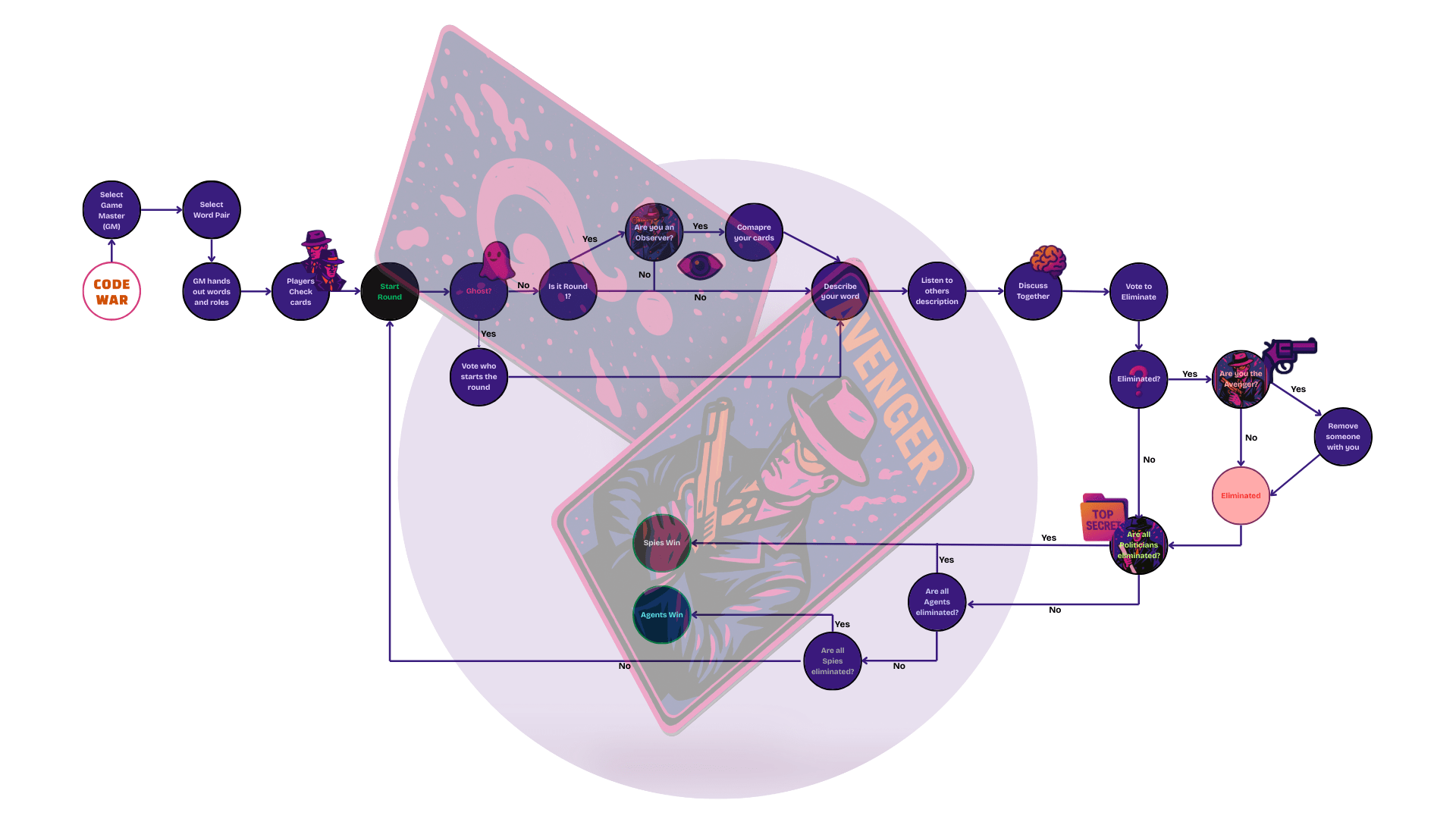
Initial decisions about Formal Elements & Values
For our initial design, we focused on creating a social deduction game centered around hidden roles, unreliable information, and layered objectives. After several rounds of discussion and testing, our team aligned on three core mechanics that would define the gameplay experience:
- Verbal communication:
We wanted conversation to be at the heart of the gameplay. So we designed a system where every player must say something out loud—but with very different levels of knowledge. Players must rely on speaking, questioning, and interpreting each other’s words to uncover hidden information. The way players choose their words and the way others listen and respond plays a critical role in the deduction process. - Social Deception(Bluffing) Genre:
We were drawn to social deception games because they create natural tension and drama, and we wanted that feeling of not being sure who you can trust to be constant throughout the game. But we didn’t want it to be a simple “spy vs team” setup, thus we then agree on “Hidden faction” mechanism, which we will discuss below. - Hidden faction:
One thing we all agreed on early was: players shouldn’t immediately know who’s on their side. Unlike traditional social deduction games where players know their allegiance from the start, in Code War, players do not initially know which faction they belong to. Through careful observation and conversation, players must deduce not only the identities of others, but also their own role and side. This adds a new layer of uncertainty and makes every interaction more meaningful, as players are constantly gathering clues about both themselves and the group.
As for our targeted audience, we aim for players who enjoy bluffing games and are comfortable engaging in social situations. We designed our game for people who are relatively outgoing, willing to talk, and who like trying to deceive or read others. The game is approachable for casual groups but includes enough structure and strategy to stay interesting for players who want more than just pure social guessing.
Formal Elements
Players
CODE WAR is designed for 6–11 players (with 1 player be the Game Master). Each player is secretly assigned to one of two hidden factions: Government (Majority) or Spies (Minority). Government players are further divided into Agents and Politicians, while a few players may receive special roles such as Observer or Avenger. The asymmetry in information and goals fosters deduction, suspicion, and social strategy.
Objectives
- Government Agents aim to eliminate all Spies while keeping at least one Politician alive.
- Spies win by eliminating all Government Agents or ensuring all Politicians are eliminated.
- Secondary player roles may introduce additional motives (e.g. the Avenger choosing one to take down if eliminated). The satisfaction comes from surviving deception, decoding hidden allegiances, and making the right call at critical moments.
Procedures
Each round consists of several phases:
- Card Phase – Players secretly check their hidden faction and role.
- Observer Phase (Round 1 only) – An Observer (if present) verifies if all players are on the same page.
- Description Phase – Players take turns giving short word clues related to their secret code word.
- Voting Phase – Players vote on who to eliminate based on the discussion and clues.
- Ghost Voting – Eliminated players (now Ghosts) vote to break ties or start the next round’s discussion.
Rules
- Agents receive a secret word(ex. “Cat”). Spies receive a similar but different word from Agents(ex. “Dog”). Politicians only get a hint word(ex. “Animal”) only.
- Players must only speak once during the Description Phase, choosing their words carefully.
- Ghosts cannot speak or hint but can vote to break ties.
- Special roles (Observer, Avenger) alter gameplay dynamics and can affect win conditions.
Resources
The core resources are the Word Cards (Word A, ex. “Cat”, for Government; Word B, ex. “Dog”, for Spies, Hint Word, ex. “Animal”, for Politician), Role Cards, and pen/paper for GM to write on Word Cards and record player’s information. A timer can be used as time for clue-giving is limited (ex. 30 seconds for description phase and 2-min for voting phase), forcing fast deduction and concise speech.
Conflict
The core tension lies in identifying enemies with limited information. Government players must protect Politicians while uncovering Spies. Meanwhile, Spies must sow confusion without being too obvious. Hidden roles and misleading clues create intense psychological conflict.
Boundaries
The play occurs in a single shared physical space where verbal interaction is key. The GM facilitates but does not participate in voting or discussion. All game actions—clue-giving, voting, elimination—occur within structured rounds, possibly around a table.
Outcome
- Government wins if all Spies are eliminated and at least one Politician survives.
- Spies win if all Government Agents or all Politicians are eliminated. The game ends immediately once a win condition is met, often with a dramatic final vote.
Testing and iteration history
4/10 – Initial Pivot
- Switched from original word-matching mechanic (Dulbi-style) to a more interactive “Undercover(谁是卧底)”-style speaking game.
- Increase accessibility and energy by encouraging speech, acting, and deduction. Easier to start and more socially engaging
4/15 – Prototype Solo Testing: Role Design Simplification
- Observation/Feedback: 6+ roles caused confusion and slowed down onboarding.
- Change/Improve: Reduced roles to 3 core types: Observer, Avenger, Bomber. Simplified roles preserve strategic depth while being easier to learn — mirrors Mafia’s distinction between base and advanced modes.
4/17 – In Class: Prototype Testing 1
- Observation/Feedback: Description Phase often stalled
- Change/Improve: Added time limits for clue-giving, thus kept pacing dynamic and reduced downtime
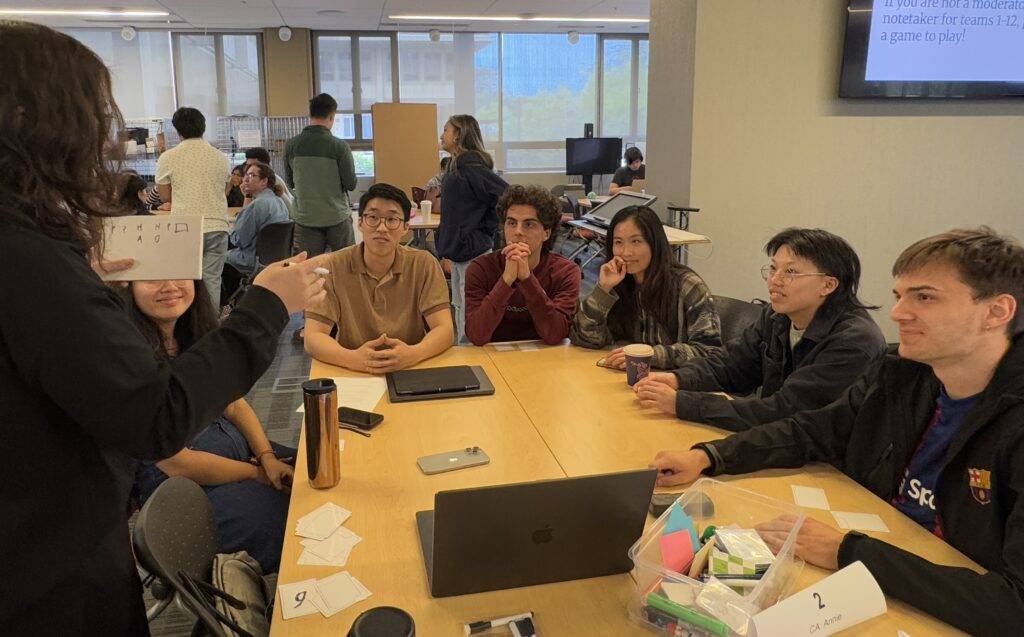
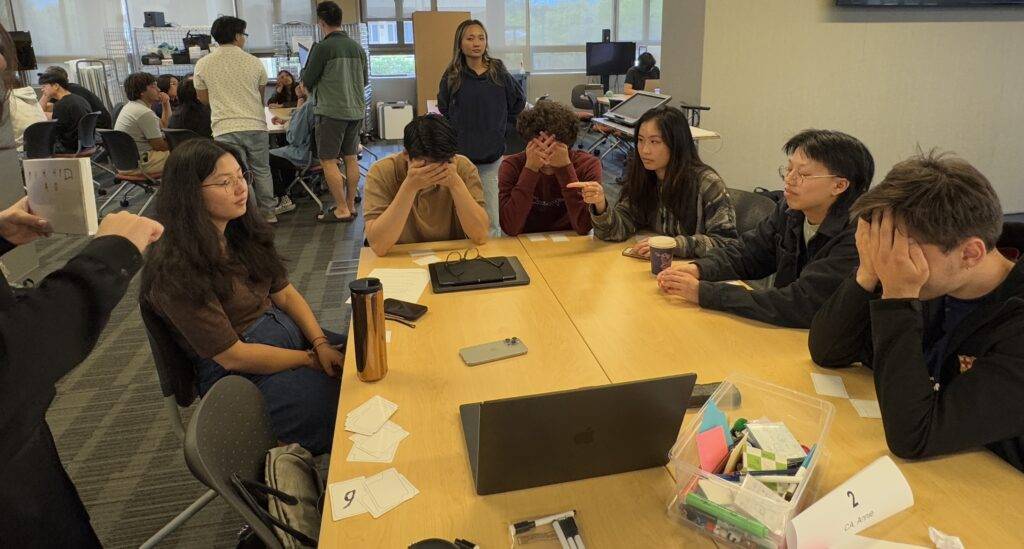
4/17 – In Section: Prototype Testing 2
- Observation/Feedback: Players struggled to understand what the Bomber was trying to do.
- Change/Improve: Made Bomber’s goal and incentive to blend in more explicit in the rulebook to prevent misplays caused by misunderstanding Bomber’s neutral win condition.
4/22 – In Class Prototype Testing 3
- Observation/Feedback: First-time moderators struggled with unclear rulebook and lacked tools to track roles and word assignments. Players also mentioned confusion about faction clarity, role functions, and how to strategize to win.
- Change/Improve: Refined the rulebook layout, clarified faction goals and role descriptions. Added strategy tips to help new players quickly understand how to play. Introduced a whiteboard tracking system for moderators to manage word pairings, role distribution, and eliminations in real-time. These updates made the game easier to run and easier to learn.
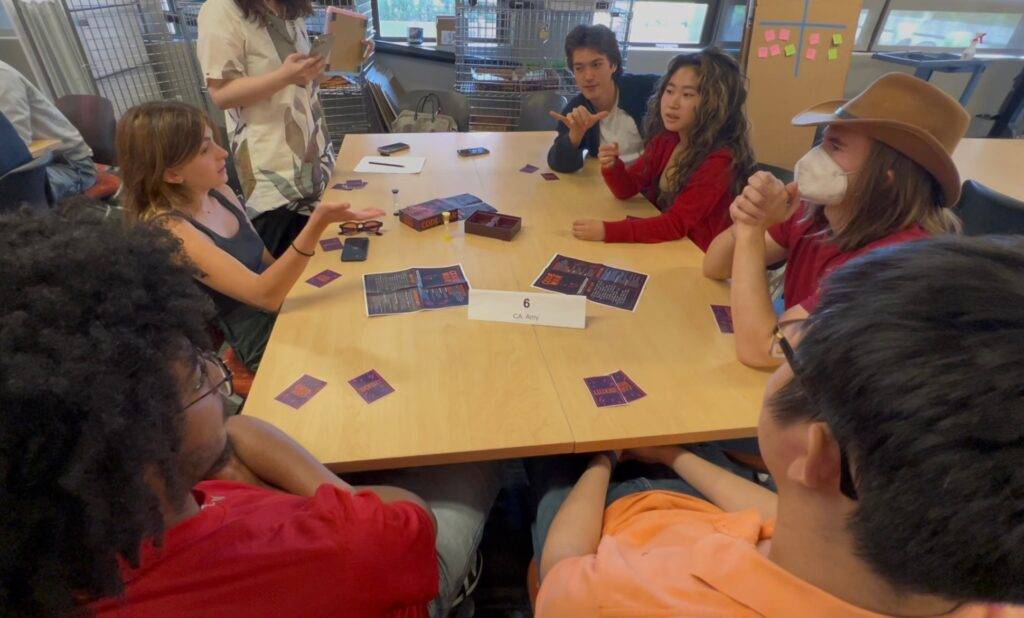
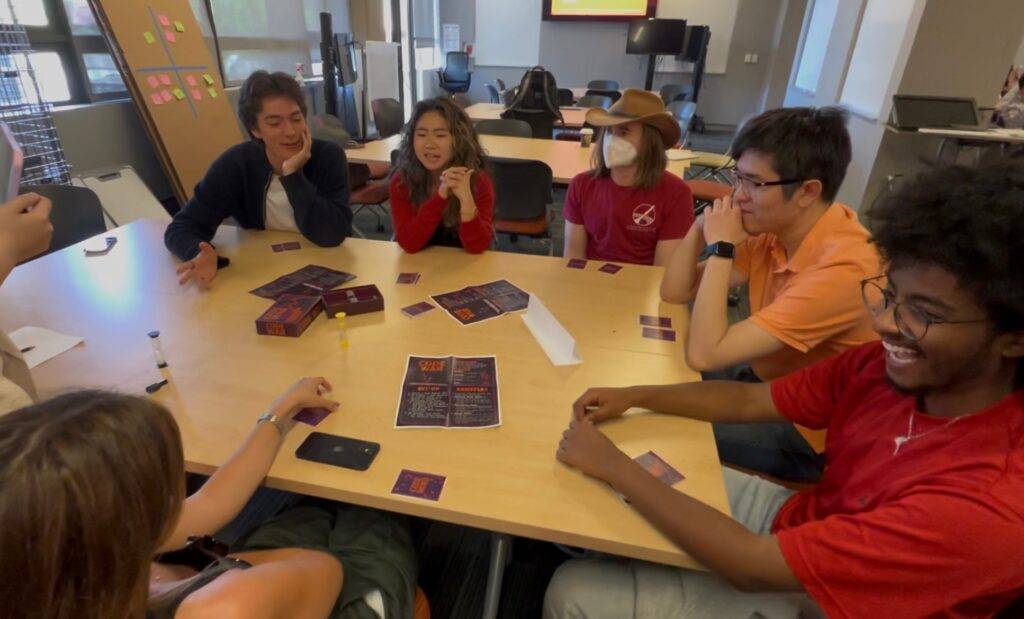
4/25 – Game Night Prototype Testing 4 – Final Balancing & Bomber Rework
- Observation/Feedback: Spies were consistently losing in large groups. Give blank card player some hints.
- Change/Improve: Prototyping a new alignment system, inspired by Secret Hitler.
- Bomber has now changed into Politician and aligned with Agents as a hidden asset that needs to be protected
- If all Politicians are eliminated, Spies win instantly.
- Thus, we add strategic tension, give Spies a potential target, and make the Politician more influential without overpowering the role.
- Instead of giving a blank card, we give the Politician a hint card. For example, GM chose the word AI/Cyborg, we can give them a hint card “Tech”.
- Note: These changes have not been tested because of time. Our video records the previous version, but our rule book has been updated to the latest version.
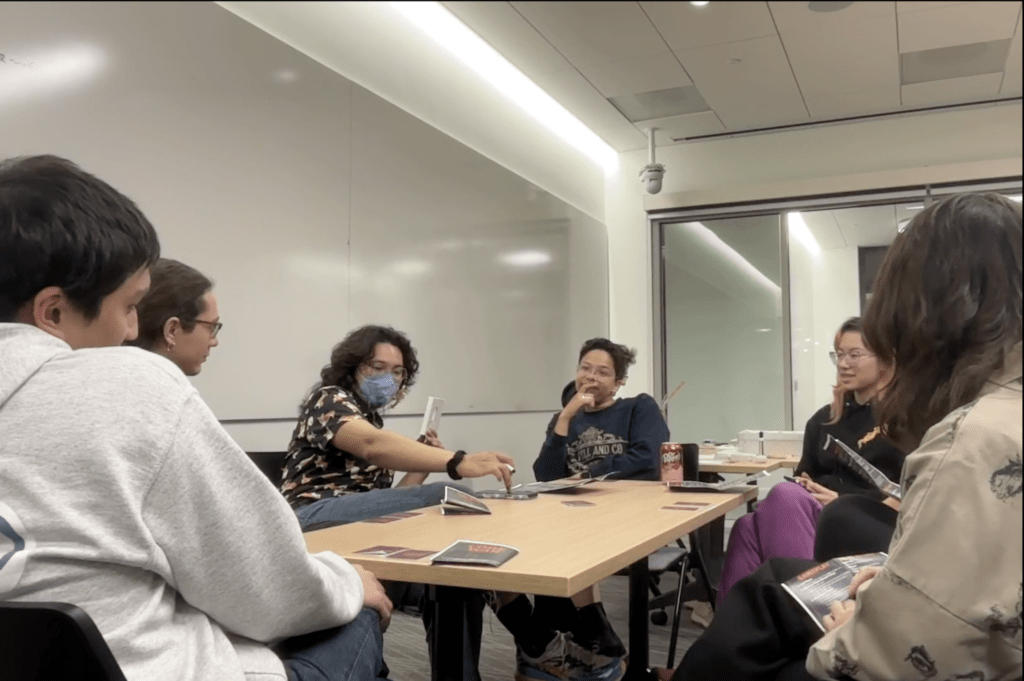
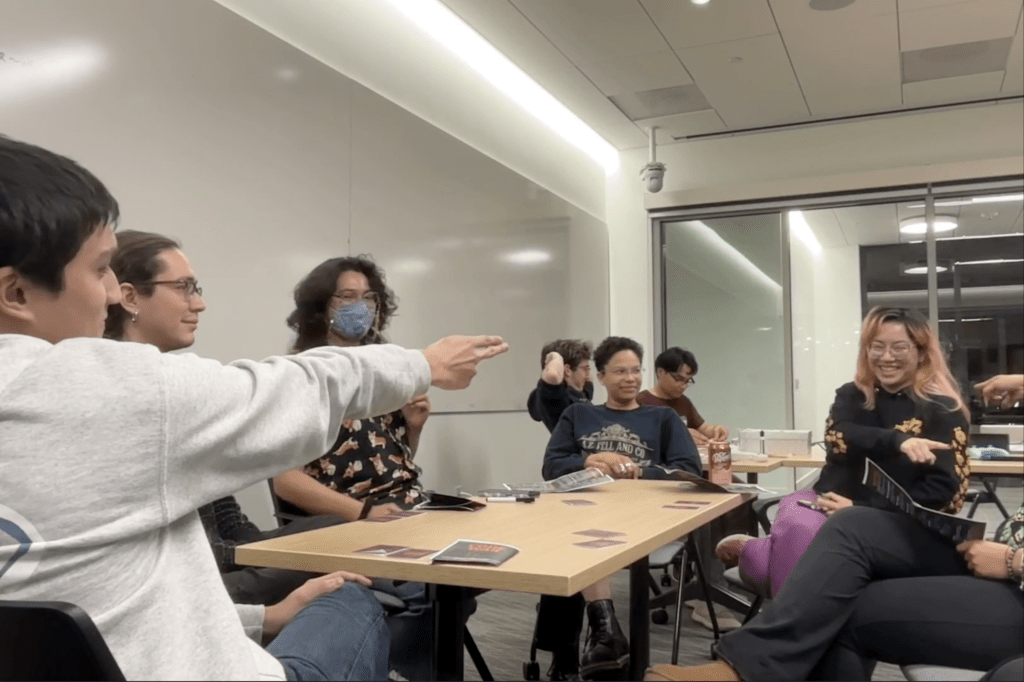
Final Playtest Video
Final Prototype
Print-n-Play
Design Mockups
